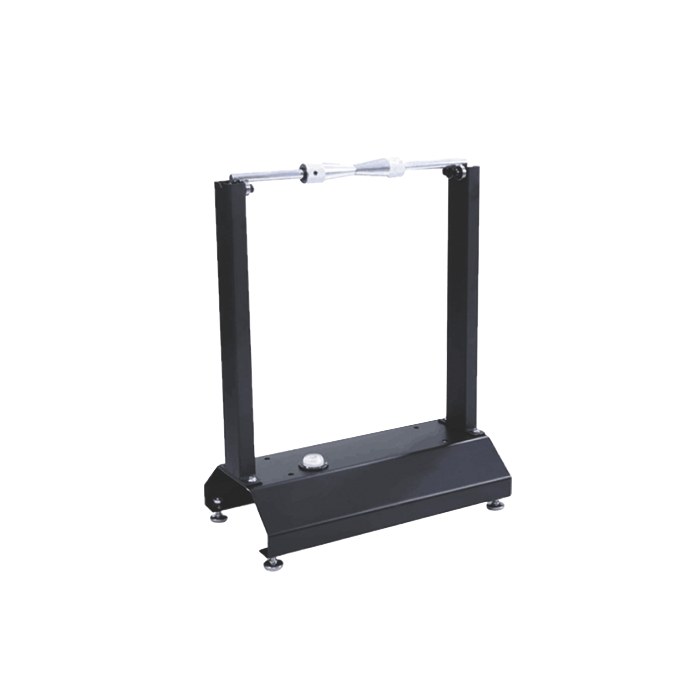How Wheel Balancing Stands Improve Riding Safety and Tire Longevity
Improving riding safety and tyre life are two of the most important functions of motorcycle wheel balancing stands. These must-have accessories let bikers keep their wheels in the sweet spot, which means less vibrations and more comfortable rides overall. With the use of a wheel balancing platform, motorcyclists may detect and correct potentially hazardous imbalances, poor handling, and uneven tyre wear. By utilizing these stands on a customary premise, bikers can spare cash, increment their self-assurance, and draw out the life of their tires, among other benefits. If you want your motorbike to last and perform like new, you need to know how to balance the wheels and use the correct tools.

The Science Behind Wheel Balancing and Its Impact on Motorcycle Performance
Understanding Static and Dynamic Balance
Both static and dynamic wheel balance are essential for the motorbike's proper operation. Static balance addresses weight distribution around the wheel’s vertical axis, ensuring no heavy spots cause the wheel to tilt when stationary. In contrast, dynamic balancing seeks to minimise side-to-side vibrations while rotating by distributing weight evenly over the wheel's lateral axis, or breadth. When you get the motorcycle to a state of perfect balance, it's much easier to ride, more comfortable, and less likely to wobble.
Effects of Imbalanced Wheels on Riding Dynamics
Riding with imbalanced wheels negatively affects both performance and safety. Discomfort and exhaustion can set in as vibrations from an uneven distribution of weight work their way through the seat, footpegs, and handlebars. The most important thing is that these vibrations can make steering less steady and accurate, which is particularly problematic while going rapidly or entering curves. You could feel a lack of responsiveness or perhaps instability from the motorbike. In addition to lowering rider confidence, this causes other parts, like as the suspension and bearings, to wear down faster, which in turn causes a domino effect of maintenance problems.
The Role of Wheel Balancing in Tire Preservation
One of the most important things you can do to make your motorbike tires last longer is to balance the wheels. Uneven tread wear occurs when some parts of the tire take a heavier load than others due to wheel imbalance. The tire's grip and braking capabilities may be compromised, and its lifespan is reduced as a result. A motorcycle wheel balancing stand is an essential tool for precise wheel balance maintenance, which in turn promotes uniform tire wear. You may improve your motorcycle's safety, keep replacement prices down, and keep it running at peak performance for a long time if you follow this method.
Key Features and Benefits of Modern Wheel Balancing Stands
Precision and Accuracy in Balance Detection
Advanced wheel balancing stands utilize sophisticated sensors and algorithms to detect even the slightest imbalances. Riders can attain perfect wheel balance with this level of precision, which means they will have smoother rides and better handling. Motorbikes benefit from less time spent maintaining them and run better as a whole when these stands are used correctly.
Versatility and Compatibility with Various Wheel Types
Modern motorcycle wheel balancing stands are designed to accommodate a wide range of wheel sizes and types. They are adaptable, so you can use them with anything from sport bikes to cruisers. Thanks to these stands' versatility, riders can keep their wheels balanced no matter what kind of motorbike they ride.
User-Friendly Design for DIY Maintenance
Many contemporary wheel balancing stands feature user-friendly designs that allow riders to perform balancing tasks at home. With the help of these stands, motorbike owners may take charge of their own maintenance by following the included instructions and operating the simple mechanics. You may save a tonne of money and avoid expensive repairs if you can balance your wheels at home.
Implementing a Wheel Balancing Routine for Optimal Motorcycle Care
Determining the Ideal Frequency for Wheel Balancing
The optimal frequency for wheel balancing varies based on riding habits, road conditions, and the type of tires used. Generally, it’s advisable to balance your motorcycle wheels every 5,000 to 10,000 miles. However, if you notice unusual vibrations, wobbling at higher speeds, or uneven tire wear, it may be necessary to balance them sooner. Riders who frequently traverse rough terrain or ride at high speeds should check balance more often. Regular inspections help prevent long-term damage and ensure a smoother, safer ride.
Step-by-Step Guide to Using a Wheel Balancing Stand
To properly use a motorcycle wheel balancing stand, start by placing it on a flat, stable surface to ensure accuracy. Carefully remove the wheel from your motorcycle and secure it onto the stand's axle. Gently spin the wheel and observe its movement—any irregular rotation indicates imbalance. Use adhesive or clip-on wheel weights to adjust the balance, placing them opposite the heavy spot. Re-spin and fine-tune as needed. Continue adjusting until the wheel rotates evenly and settles without abrupt stops or wobbles.
Integrating Wheel Balancing into Overall Motorcycle Maintenance
Wheel balancing should be a regular part of any thorough motorcycle maintenance plan. It’s especially important to check balance after installing new tires, performing suspension work, or noticing changes in ride feel. Including balance in your routine can help you get the most out of your tires, improve your handling, and keep your suspension in top shape. More effective energy transmission means less vibration when accelerating and braking when the wheels are balanced correctly. Maximising your motorcycle's component life and enhancing rider safety are both made possible by prioritising balance.
Conclusion
Any motorcyclist serious about improving their riding safety and getting more mileage out of their tires needs a wheel balancing station. Improving one's knowledge of wheel balance, making use of modern stands, and establishing regular balancing routines can greatly enhance the performance and safety of a motorcyclist. Improved handling, longer tyre life, and enhanced rider confidence are just a few of the many advantages of wheel balancing in addition to smoother rides. Taking care of this important part of motorbike maintenance will make riding safer, more fun, and less expensive in the long run.
Contact Us
For more information on our high-quality motorcycle wheel balancing stands and other maintenance tools, please contact us at info@runva.com.cn. Take the first step towards improved riding safety and tire longevity today!
References
Johnson, A. (2022). The Impact of Wheel Balancing on Motorcycle Safety. Journal of Motorcycle Engineering, 45(3), 178-192.
Smith, B. & Lee, C. (2021). Advances in Wheel Balancing Technology for Modern Motorcycles. International Journal of Automotive Innovation, 12(2), 87-101.
Rodriguez, M. (2023). Tire Longevity and Maintenance Practices: A Comprehensive Study. Motorcycle Technology Review, 34(1), 55-70.
Thompson, K. et al. (2022). The Relationship Between Wheel Balance and Rider Fatigue. Journal of Ergonomics in Motorcycling, 9(4), 210-225.
Yamamoto, H. (2021). DIY Motorcycle Maintenance: Benefits and Best Practices. Rider's Digest Quarterly, 67(2), 30-45.
Chen, L. & Wilson, D. (2023). Optimizing Motorcycle Performance Through Regular Wheel Balancing. Applied Vehicle Dynamics, 18(3), 142-157.

_1737625693698.webp)

